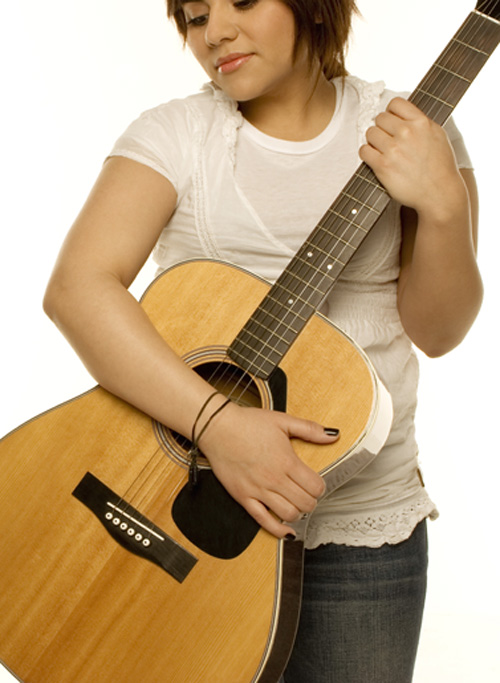

Stop 3 - To Read or Not to Read Music
We suggested in Stop 1 that you should learn to read music when you're first learning the guitar. Let's talk a bit more about this.
First, what we mean by "reading music" is the kind of thing your piano teacher (use your imagination if you didn't have one) tried to get you to do when you were learning to play the piano.
It's what we call "traditional music notation": where you have a five line staff with notes placed on the lines and in the spaces between lines.
Why many guitar players don't read traditional music notation
You've probably already heard the argument against guitar students focussing on "learning to read". In one form or another it goes like this:
"Guitar players have to know how to improvise, to go with the flow, and be creative. Trying to analyse and write down the complicated combination of notes most guitar players play is a waste of time and effort. Just learn the chords, memorize typical chord progressions (the usual way chords go together), learn how to strum in different tempos, and go from there."
This argument actually makes a lot of sense. It describes the way most beginners learn the guitar: they learn chords and simple strum patterns, and don't really have to know what notes they are playing.
But the "learn a few important chords" approach can be limiting for beginners. You will learn your chords and have some initial success playing along with songs and you will be happy with that. You will see the guitar as a chording machine.
But it can be so much more!
Perhaps more important, you will have to rely completely on memory for anything other than bare bones chording.
For example, let's say your teacher, band leader, or fellow band member asks you to play a bit of melody. Imagine your group is playing the Christmas song "Silent Night" and they want you to take the lead for one verse.
Sure you can wing it, play "by ear", figure it out and memorize it. If you play it often enough chances are you will remember it. But wouldn't it be good to have some help... "Oh yeah, I see I play a G there and it ends F-D-C."
It's actually pretty easy
Learning to read traditional notation is just one more step to becoming a skilled musician. It's similar in important ways to learning how to read English (or French, or Spanish, or any other language).
Except learning to read the language of traditional music notation is a whole lot easier than learning French or Spanish. In fact it can almost be done without any real effort at all.
It is one of those things you can learn almost by "osmosis" if you let yourself be exposed to it. If you just learn a few basic common sense concepts the rest will fall into place.
Since you are a new guitar player anyway - starting with simple melodies, scales, riffs and chords - it is the perfect time to expose yourself to simple melodies and scales written in traditional notation.
A better understanding of the instrument
When you can play your guitar from written music you will find yourself visually associating the position of notes on the staff to fret positions on the guitar. Among other things, that helps you solidify your understanding of the fretboard.
You see a note in the space between the third and fourth lines and you immediatly think B1. As you progress you will think G5 and D10 as well. It is just one more useful tool to help you learn the instrument.
Is there a "downside"?
A common criticism of teaching that emphasizes reading traditional music is that it creates students who can't play without it. This is a criticism often made of young piano students: they cannot "think on their feet". They are lost without the music.
This is probably true to a certain extent and is a good reason to not focus exclusively on playing from written music. With the guitar this never happens anyway. The approach being advocated here is to become familiar with written music, not dependent on it.
At the next stop we'll make some practical suggestions to help you learn enough music reading to be useful.
See you there.